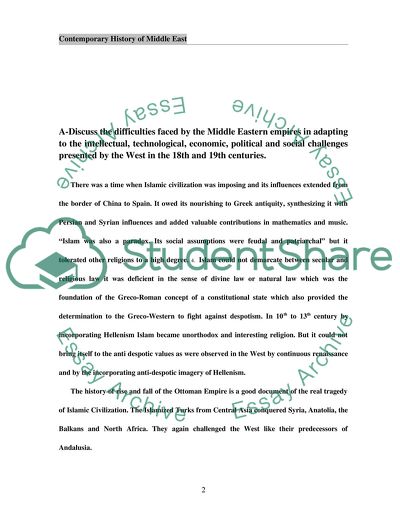Cite this document
(Contemporary History of Middle East Assignment Example | Topics and Well Written Essays - 2000 words, n.d.)
Contemporary History of Middle East Assignment Example | Topics and Well Written Essays - 2000 words. Retrieved from https://studentshare.org/history/1719398-contemporary-middle-east-history
Contemporary History of Middle East Assignment Example | Topics and Well Written Essays - 2000 words. Retrieved from https://studentshare.org/history/1719398-contemporary-middle-east-history
(Contemporary History of Middle East Assignment Example | Topics and Well Written Essays - 2000 Words)
Contemporary History of Middle East Assignment Example | Topics and Well Written Essays - 2000 Words. https://studentshare.org/history/1719398-contemporary-middle-east-history.
Contemporary History of Middle East Assignment Example | Topics and Well Written Essays - 2000 Words. https://studentshare.org/history/1719398-contemporary-middle-east-history.
“Contemporary History of Middle East Assignment Example | Topics and Well Written Essays - 2000 Words”, n.d. https://studentshare.org/history/1719398-contemporary-middle-east-history.


